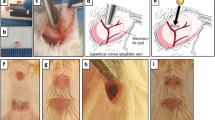Abstract
Purpose: Minimal residual tumor or minimal residual metastatic disease is a major clinical problem for detection and treatment. The purpose of the study was to develop a model system to detect the occurrence and response to therapy of minimal residual tumor in distant organs. Methods: Animals bearing subcutaneously growing established (day 8) murine EMT-6 mammary carcinoma tumors were treated with single doses of the antitumor alkylating agents, cyclophosphamide, melphalan, cis-diamminedichloroplatinum(II) (CDDP) or thiotepa. Tumors, livers, lungs, brain, spleen, blood and bone marrow were collected from the animals 24 h later and single-cell suspensions of these tissues were plated and cultured under conditions suitable for tumor cell colony growth. Results: Tumor cell colonies grew from each of the tissues with varying frequency ranging from about 6×103 tumor cell colonies per 106 cells plated from the liver, to about 2 tumor cell colonies per 106 cells plated from the brain. There was a wide range of sensitivity, spanning 2-to 3-log of the tumor cells, to the antitumor alkylating agents depending upon the tissue in which the tumor cells were located. Tumor cells in the circulating blood were most sensitive to the antitumor alkylating agents with no colony growth after treatment of the animals with any of the four drugs tested. The primary tumor growing subcutaneously in the upper hindleg of the animals was also relatively sensitive to each of the four antitumor alkylating agents tested. EMT-6 tumor cells in the spleen were very sensitive to cyclophosphamide, moderately sensitive to melphalan, less sensitive to CDDP and least sensitive to thiotepa. EMT-6 tumor cells in the bone marrow were moderately sensitive to cyclophosphamide, melphalan and thiotepa but less sensitive to CDDP. EMT-6 tumor cells in the lungs were relatively sensitive to thiotepa, moderately sensitive to cyclophosphamide and CDDP and least sensitive to melphalan. EMT-6 tumor cells in the liver or brain were least responsive to treatment of the host with any of the four antitumor alkylating agents tested. Conclusions: Treatment of the tumor-bearing animals with the antiangiogenic combination, TNP-470/minocycline, markedly increased EMT-6 tumor cell killing by cyclophosphamide in the liver, lungs and bone marrow. These results indicate that location within the host is an important determinant in the response of tumor cells to therapy.
Similar content being viewed by others
Author information
Authors and Affiliations
Additional information
Received: 15 August 1995/Accepted: 20 September 1996
Rights and permissions
About this article
Cite this article
Holden, S., Emi, Y., Kakeji, Y. et al. Host distribution and response to antitumor alkylating agents of EMT-6 tumor cells from subcutaneous tumor implants. Cancer Chemother Pharmacol 40, 87–93 (1997). https://doi.org/10.1007/s002800050631
Issue Date:
DOI: https://doi.org/10.1007/s002800050631




